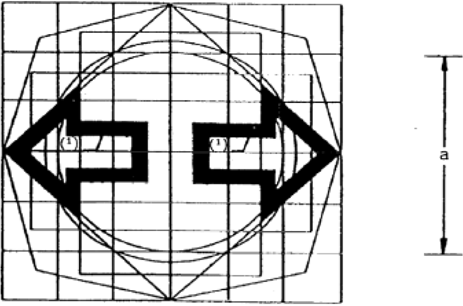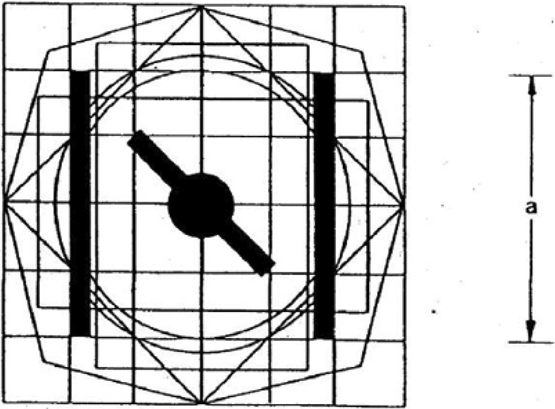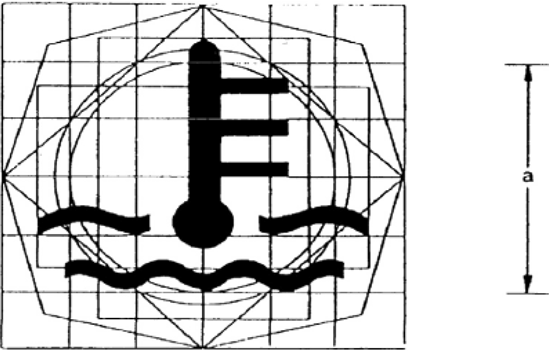- Y Diweddaraf sydd Ar Gael (Diwygiedig)
- Gwreiddiol (Fel y’i mabwysiadwyd gan yr UE)
Commission Delegated Regulation (EU) No 3/2014Dangos y teitl llawn
Commission Delegated Regulation (EU) No 3/2014 of 24 October 2013 supplementing Regulation (EU) No 168/2013 of the European Parliament and of the Council with regard to vehicle functional safety requirements for the approval of two- or three-wheel vehicles and quadricycles (Text with EEA relevance)
You are here:
Rhagor o Adnoddau
PDF o Fersiynau Diwygiedig
- ddiwygiedig 16/10/20166.74 MB
Pan adawodd y DU yr UE, cyhoeddodd legislation.gov.uk ddeddfwriaeth yr UE a gyhoeddwyd gan yr UE hyd at ddiwrnod cwblhau’r cyfnod gweithredu (31 Rhagfyr 2020 11.00 p.m.). Ar legislation.gov.uk, mae'r eitemau hyn o ddeddfwriaeth yn cael eu diweddaru'n gyson ag unrhyw ddiwygiadau a wnaed gan y DU ers hynny.
Mae'r eitem hon o ddeddfwriaeth yn tarddu o'r UE
Mae legislation.gov.uk yn cyhoeddi fersiwn y DU. Mae EUR-Lex yn cyhoeddi fersiwn yr UE. Mae Archif Gwe Ymadael â’r UE yn rhoi cipolwg ar fersiwn EUR-Lex o ddiwrnod cwblhau’r cyfnod gweithredu (31 Rhagfyr 2020 11.00 p.m.).
Status:
EU_status_warning_original_version
This legislation may since have been updated - see the latest available (revised) version
2.Specific requirements
2.1.Controls, tell-tales and indicators fitted to the vehicle and listed in point 2.1.10 shall comply with the requirements regarding location, identification, colour and illumination. For functions for which no symbol is provided in this Regulation, the manufacturer may use a symbol following the appropriate ISO 6727:2012 or 2575:2010/Amd1:2011 standards. Where no ISO symbol is available, the manufacturer may use a symbol of its own conception. In any case, such symbol shall not cause confusion with any prescribed symbol.
2.1.1.The symbols shall stand out clearly against the background.
2.1.1.1.Contrasting colours shall be used to comply with the requirements of point 2.1.1.
2.1.2.The symbols shall be placed on the control or control tell-tale to be identified, or in immediate proximity thereof. Where this is not possible, the symbol and control or tell-tale shall be joined by a continuous dash that is as short as possible.
2.1.3.Deviations in the shape of the provided symbols are not permitted.
2.1.4.If necessary for clarity, supplementary symbols may be used in conjunction with any symbol as specified, provided that they do not cause confusion with any symbol specified in this Regulation.
2.1.5.At the manufacturer’s discretion, any control or indicator as well as their identifications may be capable of being illuminated at any time.
2.1.6.A tell-tale shall not emit light except when identifying the malfunction or vehicle condition it is designed to indicate or during a functional check (e.g. bulb check).
2.1.7.Means shall be provided to ensure that tell-tales and their identification are visible and recognisable under all driving conditions.
2.1.7.1.When illuminated, tell-tales and their associated identifying symbols shall be perfectly visible and recognisable under all ambient lighting conditions.
2.1.8.When used for optical tell-tales, the following colours shall have the meanings indicated:
red: danger to persons or very serious damage to equipment is immediate or imminent,
yellow: outside normal operating limits, vehicle system malfunction, damage to vehicle likely, or other condition which may produce hazard in the longer term (caution),
green: safety, normal operating condition (except if blue or yellow is required).
The mandatory colours are given in point 2.1.10. It shall be verified that no inappropriate colour is used for tell-tales even if fitted cumulatively (e.g. red for normal cruise control operation or for ‘sport’ mode).
2.1.9.If colour coding is used to identify the limits of the adjustment range of a temperature function (e.g. passenger compartment heating system), the hot limit shall be identified by the colour red and the cold limit by the colour blue. If the status or limit of a function is shown by an indicator separated from and not adjacent to the control for that function, both the control and the indicator shall be independently identified with the appropriate symbol.
2.1.10.Designation and identification of symbols:
Figure 8-4
Hazard warning signal (control / tell-tale)
Two possibilities:
Identifying signal (Figure 8-4),
Tell-tale colour: red
or
Simultaneous operation of the separate direction indicator tell-tales (Figure 8-3), provided that these normally operate independently (see Note below Figure 8-3).

Explanatory notes:
(1)The framed areas may be solid.
(2)The dark part of this symbol may be replaced by its silhouette.
2.1.11.The model base provided in Figure 8-22 shall be used.
The model base consists of:
a base 50 mm square, this dimension being equal to nominal dimension ‘a’ in the original;
a base circle 56 mm in diameter having approximately the same area as the base square (1);
a second 50 mm-diameter circle is drawn within the base square (1);
a second square the tips of which lie on the base circle (2) and the sides of which are parallel to those of the base square (1);
and (6) two rectangles having the same area as the base square (1), their sides being at right angles to each other and each of them devised so as to divide the opposite sides of the base square into symmetrical points;
a third square the sides of which pass through the points of intersection of the base square (1) and the base circle (2) and are inclined at 45°, thus providing the greatest horizontal and vertical dimensions of the model base;
an irregular octagon formed by lines inclined at 30° to the sides of the square (7).
The base model is laid upon a grid the lower side of which measures 12,5 mm and coincides with the base square (1).
2.2.Common space for displaying multiple information.
2.2.1.A common space may be used to show information from any source, provided that the following requirements are met:
2.2.1.1.The tell-tales and indicators displayed in the common space shall meet the requirements of points 2.1 to 2.1.11 and shall light up at the initiation of the condition they are designed to identify.
2.2.1.2.The tell-tales and indicators listed in point 2.1.10 and shown in the common space shall light up at the initiation of any underlying condition.
2.2.1.3.Except as provided in points 2.2.1.4 to 2.2.1.6, when the condition exists for actuation of two or more tell-tales, the information shall be either:
repeated automatically in sequence,
or
indicated by visible means and capable of being selected for viewing by the driver when seated in the driving position.
2.2.1.4.The tell-tales for any braking system malfunction, headlamp driving beam and direction indicator shall not be shown in the same common space.
2.2.1.5.If any of those tell-tales are displayed in a common space with other tell-tales, their activation shall take precedence over that of anything else in the common space.
2.2.1.6.It shall not be possible to deactivate the braking system malfunction, headlamp driving beam and direction indicator tell-tales, or any other red tell-tale, when the condition for their activation still exists. It may be possible for other information displayed in a common space to be cancelled automatically or by the driver.
Options/Cymorth
Print Options
PrintThe Whole Regulation
PrintThe Whole Annex
PrintThis Division only
You have chosen to open the Whole Regulation
The Whole Regulation you have selected contains over 200 provisions and might take some time to download. You may also experience some issues with your browser, such as an alert box that a script is taking a long time to run.
Would you like to continue?
You have chosen to open Schedules only
Y Rhestrau you have selected contains over 200 provisions and might take some time to download. You may also experience some issues with your browser, such as an alert box that a script is taking a long time to run.
Would you like to continue?
Mae deddfwriaeth ar gael mewn fersiynau gwahanol:
Y Diweddaraf sydd Ar Gael (diwygiedig):Y fersiwn ddiweddaraf sydd ar gael o’r ddeddfwriaeth yn cynnwys newidiadau a wnaed gan ddeddfwriaeth ddilynol ac wedi eu gweithredu gan ein tîm golygyddol. Gellir gweld y newidiadau nad ydym wedi eu gweithredu i’r testun eto yn yr ardal ‘Newidiadau i Ddeddfwriaeth’.
Gwreiddiol (Fel y’i mabwysiadwyd gan yr UE): Mae'r wreiddiol version of the legislation as it stood when it was first adopted in the EU. No changes have been applied to the text.
Rhagor o Adnoddau
Gallwch wneud defnydd o ddogfennau atodol hanfodol a gwybodaeth ar gyfer yr eitem ddeddfwriaeth o’r tab hwn. Yn ddibynnol ar yr eitem ddeddfwriaeth sydd i’w gweld, gallai hyn gynnwys:
- y PDF print gwreiddiol y fel adopted version that was used for the EU Official Journal
- rhestr o newidiadau a wnaed gan a/neu yn effeithio ar yr eitem hon o ddeddfwriaeth
- pob fformat o’r holl ddogfennau cysylltiedig
- slipiau cywiro
- dolenni i ddeddfwriaeth gysylltiedig ac adnoddau gwybodaeth eraill
Rhagor o Adnoddau
Defnyddiwch y ddewislen hon i agor dogfennau hanfodol sy’n cyd-fynd â’r ddeddfwriaeth a gwybodaeth am yr eitem hon o ddeddfwriaeth. Gan ddibynnu ar yr eitem o ddeddfwriaeth sy’n cael ei gweld gall hyn gynnwys:
- y PDF print gwreiddiol y fel adopted fersiwn a ddefnyddiwyd am y copi print
- slipiau cywiro
liciwch ‘Gweld Mwy’ neu ddewis ‘Rhagor o Adnoddau’ am wybodaeth ychwanegol gan gynnwys
- rhestr o newidiadau a wnaed gan a/neu yn effeithio ar yr eitem hon o ddeddfwriaeth
- manylion rhoi grym a newid cyffredinol
- pob fformat o’r holl ddogfennau cysylltiedig
- dolenni i ddeddfwriaeth gysylltiedig ac adnoddau gwybodaeth eraill





















